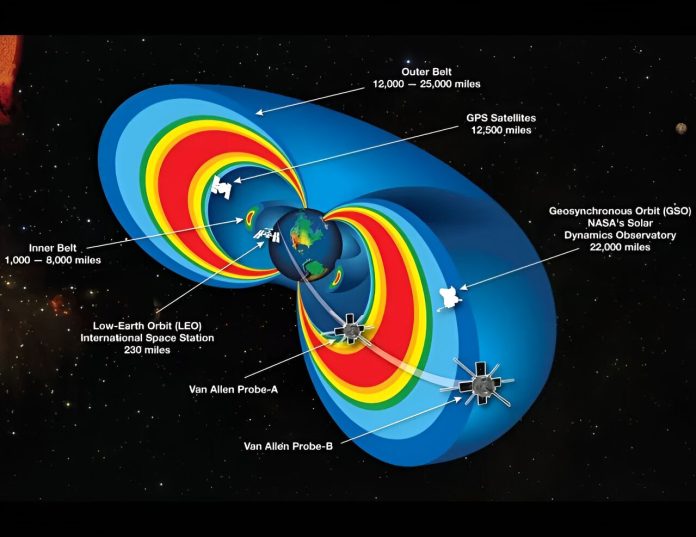
Two scientists from the University of Alaska Fairbanks have made a groundbreaking discovery about Earth’s radiation belts.
Vikas Sonwalkar, a professor emeritus, and Amani Reddy, an assistant professor, found a new type of electromagnetic wave called a “whistler.”
This wave, which carries a significant amount of energy from lightning, plays a key role in how energy moves from Earth’s atmosphere to the magnetosphere.
Their research, published in the journal Science Advances, shows that these waves, which they named “specularly reflected whistlers,” carry lightning energy from the lower latitudes of Earth’s ionosphere to the magnetosphere.
This energy is reflected upward by the ionosphere, a layer of the atmosphere about 55 miles above the Earth, and reaches the opposite hemisphere.
Previously, scientists thought that lightning energy entering the ionosphere at low latitudes stayed trapped within the ionosphere, meaning it couldn’t reach the radiation belts.
These belts are two layers of charged particles surrounding Earth, held in place by the planet’s magnetic field. The belts can be harmful to satellites, space technology, and even astronauts, making this discovery crucial for understanding space safety.
Sonwalkar explained, “Our society depends on space technology. Communication systems, navigation, satellites, and even astronauts can be affected by the harmful particles in the radiation belts. Understanding how these belts work, and the waves that affect them, is vital for safe space operations.”
The new type of whistler wave is different from another kind called “magnetospherically reflected whistlers,” which had been previously studied. These new waves produce a whistling sound when played through a speaker, giving them their name.
The scientists used data from NASA’s Van Allen Probes, which operated from 2012 to 2019, along with lightning data from the World Wide Lightning Detection Network, to develop a model of how these waves move. Their model showed that when specularly reflected whistlers are considered, the amount of lightning energy reaching the magnetosphere doubles.
Interestingly, most lightning occurs in low-latitude regions, such as tropical and subtropical areas prone to thunderstorms. This suggests that specularly reflected whistlers may carry more lightning energy to the magnetosphere than other types of whistlers.
Sonwalkar and Reddy’s research not only deepens our understanding of how lightning affects Earth’s radiation belts but also highlights the importance of this energy in space science. Their work is supported by grants from the National Science Foundation and NASA.



